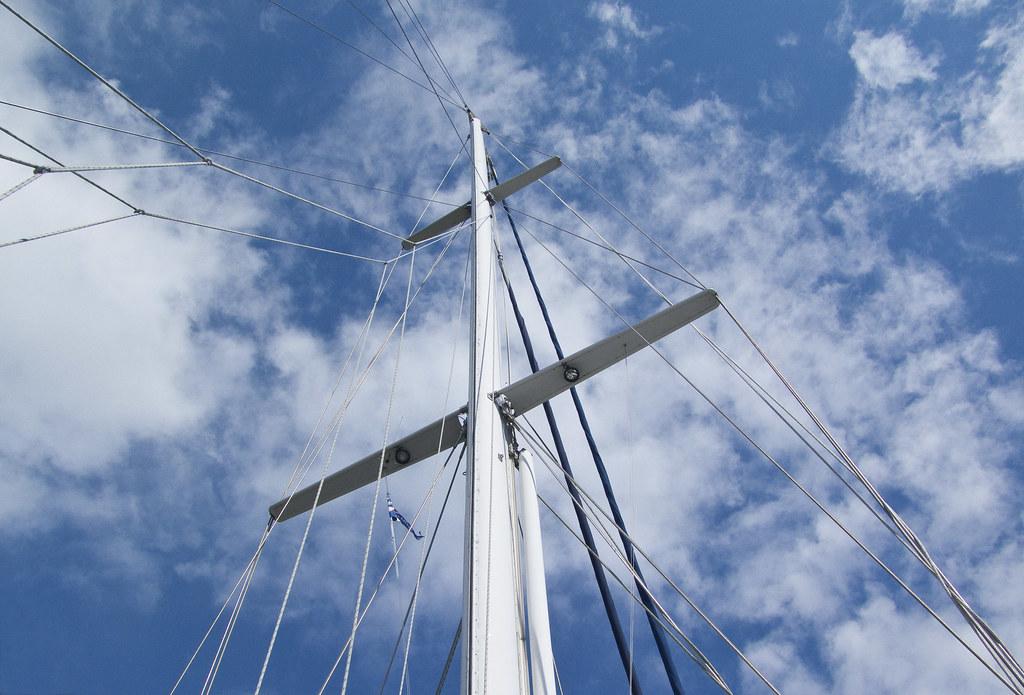
The Thill slip float, also known as a slip bobber or slip cork, is a highly versatile fishing tool that allows anglers to easily control the depth of their bait or lure. Whether you are angling for panfish in a tranquil pond or casting a line in fast-moving rivers, mastering the use of a Thill slip float can greatly enhance your chances of success. This article aims to provide a comprehensive guide on how to effectively utilize this tool, covering everything from rigging techniques to adjusting for varying conditions. By familiarizing yourself with the proper use of a Thill slip float, you can maximize your fishing experience and increase your chances of reeling in that ultimate catch.
Introduction to Thill Slip Floats
A Thill Slip Float is a versatile and effective tool for anglers of all experience levels. Designed to be attached to your fishing line, this float allows you to achieve the precise depth you desire, ensuring that your bait is presented at the perfect level. Whether you’re targeting panfish, trout, or larger game fish, mastering the use of a Thill Slip Float can greatly enhance your fishing success.
One of the key benefits of using a Thill Slip Float is its adjustability. By simply sliding the float up or down your line, you can easily fine-tune the depth at which your bait is suspended. This is particularly useful when fishing in varying water depths or targeting fish that have specific feeding habits. The ability to quickly and easily adjust the depth of your bait gives you a significant advantage on the water.
To effectively use a Thill Slip Float, start by selecting the appropriate size and weight for your fishing conditions. Thill offers a wide range of sizes and styles to accommodate different fishing scenarios, so be sure to choose one that best suits your needs. Keep in mind that heavier floats are better suited for deeper water or when targeting larger fish, while lighter floats are ideal for shallower water or when using smaller baits.
Once you’ve chosen the right Thill Slip Float, it’s time to rig it up. Begin by threading your fishing line through the small hole at the bottom of the float. Next, attach a small bead to the line to act as a stopper for the float. This will prevent the float from sliding all the way down to your hook. Finally, tie on a small swivel to prevent line twist and attach your hook or lure to the other end of the swivel. Your Thill Slip Float rig is now ready to be used.
When casting your Thill Slip Float rig, be sure to use a smooth and fluid motion to avoid any tangles or snags. Once your rig hits the water, allow the float to settle and then gently reel in any slack line. Watch for any movement or dips in the float, as this may indicate a fish biting. When you detect a bite, resist the urge to immediately set the hook. Instead, give the fish a moment to fully take the bait before setting the hook with a quick upward motion.
In conclusion, using a Thill Slip Float is a valuable technique that can greatly improve your fishing success. By mastering the art of adjusting the depth, choosing the right size and weight, and rigging your float properly, you’ll be well-equipped to target a wide variety of fish species. So, next time you’re out on the water, give the Thill Slip Float a try and experience the difference it can make in your fishing adventures.

Selecting the Right Thill Slip Float
When it comes to fishing, using the right equipment is crucial for success. One essential piece of equipment for any angler is a thill slip float. These floats are designed to help you detect bites and control the depth at which you fish. Whether you’re a beginner or an experienced angler, can make a significant difference in your fishing experience. In this post, we’ll explore how to use a thill slip float and provide some tips for selecting the right one.
1. Determine the Depth
The first step in is to determine the depth at which you’ll be fishing. Different fish species prefer different depths, so it’s essential to choose a float that allows you to easily adjust and control the depth of your bait. Consider the water conditions, such as the current and clarity, as these factors can also affect the fish’s preferred depth.
2. Consider Size and Weight
Thill slip floats come in various sizes and weights. The size of the float determines how much it will buoy your bait, while the weight affects the casting distance and stability. If you’re targeting smaller fish or fishing in calm waters, a smaller and lighter float may be suitable. On the other hand, larger and heavier floats are ideal for catching larger fish or fishing in rougher conditions. Experiment with different sizes and weights to find the right balance for your specific fishing needs.
3. Choose the Material
Thill slip floats are typically made of either foam or balsa wood. Each material has its advantages and disadvantages. Foam floats are more durable and offer better visibility, making them an excellent choice for beginners. On the other hand, balsa wood floats have a more natural buoyancy and sensitivity, making them a preferred choice for experienced anglers. Consider your fishing style, preferences, and budget when choosing between foam and balsa wood floats.
4. Opt for Adjustable Features
Having an adjustable thill slip float gives you more control and flexibility during your fishing trips. Look for floats that allow you to easily change the depth and attach additional weights if needed. Adjustable floats can adapt to changing fishing conditions and increase your chances of catching more fish.
5. Consider Visibility
Visibility is crucial when it comes to detecting bites. Look for thill slip floats that have bright colors or come with brightly colored tops for better visibility in different light conditions. Additionally, consider using a float with an indicator or a hi-vis tip that can make it easier to see even the slightest movements when a fish bites.
In conclusion, is essential for a successful fishing experience. Consider the depth, size, weight, material, adjustability, and visibility when choosing a float. Remember to experiment with different floats and techniques to find what works best for you. Happy fishing!

Proper Rigging Techniques for Thill Slip Floats
Thill slip floats are popular among anglers because of their versatility and effectiveness in many fishing situations. Whether you’re a beginner or an experienced angler, mastering the proper rigging techniques is essential for maximizing your success on the water. In this post, we will guide you through the step-by-step process of using a Thill slip float.
1. Choose the Right Size Float
Thill slip floats come in various sizes, and selecting the right one is crucial for achieving the desired buoyancy and sensitivity. Consider the size of your target species, water conditions, and bait weight to determine the appropriate float size. Remember, a properly balanced float will allow you to detect even the slightest nibble.
2. Attach the Bobber Stop
To prevent the float from sliding down your fishing line, it’s vital to use a bobber stop. Start by threading the line through the bobber stop, keeping it loose.
3. Position the Bead
After attaching the bobber stop, insert a bead onto the line. The bead serves as a buffer between the bobber stop and the slip float, protecting your knot. It also adds a splash of color, making it easier to spot the float from a distance.
4. Tie the Slip Float onto the Line
Next, tie the slip float to your line using a secure knot. It’s essential to leave enough slack between the bead and the float to allow for smooth movement and prevent tangling. A simple overhand knot or double uni knot works well for most fishing situations.
5. Add Your Terminal Tackle
Once you have securely attached the slip float, it’s time to add your terminal tackle. This can include hooks, weights, and bait. Be mindful of the weight and size of your terminal tackle, as it can affect the overall balance and performance of your rig. Experiment with different setups to find the perfect combination for your fishing needs.

Mastering the Art of Adjusting Thill Slip Floats
Using a Thill slip float can take your fishing game to the next level. This versatile float allows you to present your bait at various depths without the hassle of retying your rig. However, to truly master the art of using a Thill slip float, you need to know how to adjust it effectively. In this post, we will guide you through the process of adjusting your Thill slip float to achieve optimal results.
Step 1: Selecting the Right Size of Thill Slip Float
Before you can start adjusting your Thill slip float, it’s crucial to choose the correct size for your intended purpose. Thill slip floats come in various sizes, ranging from small to large. The size you choose depends on factors such as the depth of your fishing spot, the size of the fish you’re targeting, and the weight of your bait. Generally, larger slip floats are better suited for deeper waters and bigger fish, while smaller ones work well for shallow waters and smaller fish.
Step 2: Setting the Depth
To adjust the depth at which your Thill slip float will suspend your bait, begin by sliding the float up the line away from your hook. Once you have positioned the float at the desired depth, you can secure it by tightening the float stop knot or using a sliding bobber stop. It’s important to set the depth based on the water conditions and the behavior of the fish you’re targeting. Experiment with different depths until you find the sweet spot that elicits bites.
Step 3: Securing the Bobber Stop
Once you have set the depth, it’s crucial to secure the bobber stop properly to prevent it from sliding up or down the line during casting or retrieving. A loose bobber stop can lead to inaccurate presentations and missed opportunities. Make sure to tighten the bobber stop enough to hold the float securely in place, but not so tight that it damages the line. Regularly check the bobber stop throughout your fishing session to ensure it remains secure.
Step 4: Adjusting for Wind and Current
Wind and current can significantly impact the performance of your Thill slip float. To counteract these factors, consider adjusting the placement and weight of your split shot sinkers. Placing the split shot sinkers closer to the float can help stabilize it in windy conditions, while moving them farther away can help counter strong currents. Experiment with different configurations until you find the setup that allows for a natural presentation and maximizes your chances of attracting fish.
By following these steps and mastering the art of adjusting your Thill slip float, you’ll gain better control over your bait’s presentation and increase your chances of catching more fish. Remember, practice makes perfect, so don’t be afraid to experiment and fine-tune your technique based on your fishing conditions and target species. Happy fishing!

Advanced Tips and Tricks for Thill Slip Float Fishing
Thill Slip Floats are a popular choice among anglers for its versatility and effectiveness in various fishing conditions. If you are looking to take your Thill Slip Float fishing skills to the next level, here are some advanced tips and tricks that can help you maximize your success on the water.
Adjusting the Depth: The key to successful Thill Slip Float fishing lies in finding the right depth at which the fish are feeding. Experiment with different depths by sliding the bobber stop up or down the fishing line. Remember to consider factors like water temperature, time of day, and the species you are targeting. Once you find the sweet spot, mark it on your fishing line for quick reference.
Choosing the Right Weight: The weight attached to your Thill Slip Float plays a crucial role in achieving the desired results. Start by using the lightest weight possible, allowing the float to move naturally with the current. However, if you are fishing in deeper or faster-moving waters, a slightly heavier weight may be necessary to keep the bait in the strike zone.
Proper Bait Presentation: To entice fish to bite, it is essential to present your bait in the most natural and enticing way. Make sure your bait is securely attached to the hook and adjust the leader length accordingly. Using a longer leader gives your bait more freedom of movement, while a shorter leader keeps it closer to the float. Experiment with different bait types and sizes to see what works best for the fish you are targeting.
Mastering the Cast: Casting with a Thill Slip Float requires precision and finesse. When casting, try to land the float softly on the water, minimizing disturbance that could spook the fish. Aim for accuracy rather than distance, as placing your bait precisely where the fish are is crucial for success. Practice your casting technique to achieve consistent and accurate casts every time.
Being Patient and Observant: Thill Slip Float fishing is not a game of instant gratification. Patience is key, as you may have to wait for the right moment when the fish are actively feeding. Observe the water surface for any signs of fish activity, such as ripples, splashings, or jumping fish. Pay attention to subtle movements or vibrations transmitted through the line, as they could indicate a fish is nibbling on your bait. Stay alert and be ready to set the hook at the slightest indication.
By following these advanced tips and tricks, you will have a greater chance of success when using a Thill Slip Float. Remember to stay adaptable and willing to experiment with different techniques and setups to find what works best for you in various fishing situations. Tight lines and happy angling!
Q&A
Q: What is a Thill slip float?
A: A Thill slip float is a versatile fishing float designed to help anglers detect fish bites while fishing. It is also known as a slip bobber or slip cork.
Q: How does a Thill slip float work?
A: A Thill slip float is designed to slide freely along the fishing line until it reaches a predetermined depth, which can be adjusted by the angler. It allows the fishing line to pass through the float, giving fish more freedom to bite without feeling resistance from the float.
Q: What are the main components of a Thill slip float?
A: A Thill slip float consists of a hollow cylindrical float made from materials like balsa wood or plastic, a bobber stop, a stop knot or bead, and a small weight called a shot.
Q: How do I set up a Thill slip float?
A: To set up a Thill slip float, start by threading the fishing line through the hollow center of the float. Next, slide on a bobber stop, followed by a stop knot or bead, which will prevent the float from sliding off the line. Finally, attach a small weight, such as a shot, below the float to help stabilize it.
Q: How do I adjust the depth of the Thill slip float?
A: To adjust the depth of the Thill slip float, first, cast your rig into the water and allow it to sink to the desired depth. Then, slide the bobber stop towards the float to prevent it from sliding any further. By doing so, you can effectively set the depth at which the bait or lure will fish.
Q: What are the advantages of using a Thill slip float?
A: Thill slip floats offer several advantages to anglers. They allow for quick and easy depth adjustment, which is particularly useful when fishing in varying water depths. Thill slip floats also provide exceptional bite sensitivity, making it easier to detect even the slightest fish movement.
Q: What types of fishing are Thill slip floats best suited for?
A: Thill slip floats are widely used in various fishing techniques such as float fishing, still fishing, and live bait fishing. They are particularly effective for targeting panfish, crappie, walleye, trout, and other species that often require delicate presentations.
Q: Are there any drawbacks to using a Thill slip float?
A: While Thill slip floats can greatly improve your fishing experience, they may not be suitable for all situations. Strong currents or windy conditions may cause the float to drift or become less stable. Additionally, very shallow water or heavy cover may limit their effectiveness.
Q: Any tips for maintaining and storing Thill slip floats?
A: To ensure a longer lifespan for your Thill slip floats, always rinse them with freshwater after each use to remove any debris or saltwater residue. Store them in a dry place, away from extreme temperatures, and avoid placing heavy objects on top of them to prevent deformation. Checking the float’s integrity before each use is also recommended. In conclusion, mastering the use of a Thill slip float can greatly enhance your fishing experience. By understanding the purpose and mechanics of this versatile float, you can effectively adapt your fishing technique to various conditions and increase your chances of success.
Begin by selecting the appropriate Thill slip float size and shape based on your target fish species, fishing location, and the weight of your bait. Properly rigging your float with split shot weights and adjusting its depth will allow you to present the bait at just the right level in the water column, increasing the likelihood of enticing bites.
Remember to pay close attention to subtle movements and indications from the float, as they can provide valuable insight into fish activity. Additionally, learning to differentiate between various float positions and possible causes such as bites, currents, or debris will fine-tune your fishing strategy.
By effectively casting and retrieving your rig, you can cover a wider area and explore different depths, increasing your chances of finding active fish. Also, utilizing Thill slip floats in combination with other fishing techniques such as drift fishing or with live bait can yield excellent results.
It is important to embrace patience and persistence when using a Thill slip float, as it may take time to fully understand its dynamics and to achieve success. However, with practice and observation, you will gradually develop the necessary skills and adapt to different fishing scenarios.
In summary, the Thill slip float is a powerful tool that should be included in every angler’s arsenal. Understanding how to rig, adjust, and interpret its movements will greatly improve your fishing efficiency and ultimately lead to more fruitful and enjoyable fishing experiences. So, take the time to master the art of using a Thill slip float, and get ready to reel in some impressive catches!






